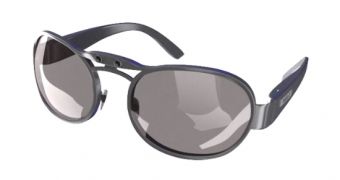Meta is a startup company that probably wouldn't have managed to get its plans off the ground alone. Fortunately, it managed to secure a collaboration with Epson, leading to the successful introduction of the Meta 1 augmented reality headset.
The first difference anyone will notice between it and Google's Glass is that both eyes are covered, not just one.
Sadly, the aesthetics suffer greatly. Meta 1 is, after all, based on the Epson Moverio BT-100, a black and squarish pair of shades with a dual-cam system above and between the lenses.
Sure, Epson and Meta intend to refine the design until it reflects the one in the photo up on the left, but that will take a while to come about.
Meta 1, or Moverio BT-100, projects images and information to both eyes instead of just one.
It also runs the Android operating system (exact version unclear, bound to change with time) and, of course, possesses integrated Wi-Fi support.
A low-latency 3D camera is part of the spec sheet as well, for tracking hand movements. Complex gestures like thumbs up, to like Facebook posts, are recognized thanks to the resolution that can differentiate between individual fingers.
Everything else (identifying objects and landmarks, displaying information bubbles, etc.) will be software functions.
Thus, Meta will have to convince developers to get one or two of the Meta 1 and produce apps, with or without functions that need wireless communications.
Sales for developers have actually started (Friday, May 17, 2013), so with luck, this will move quickly.
Meta 1 boasts a battery that can last for up to six hours on a full charge. Curiously, an external box linked to the headset via a cable houses the battery, and the processor for that matter. The more refined design in the photo, and the video below, may bring with it a fuller integration, but it is not a guarantee.

 14 DAY TRIAL //
14 DAY TRIAL // 